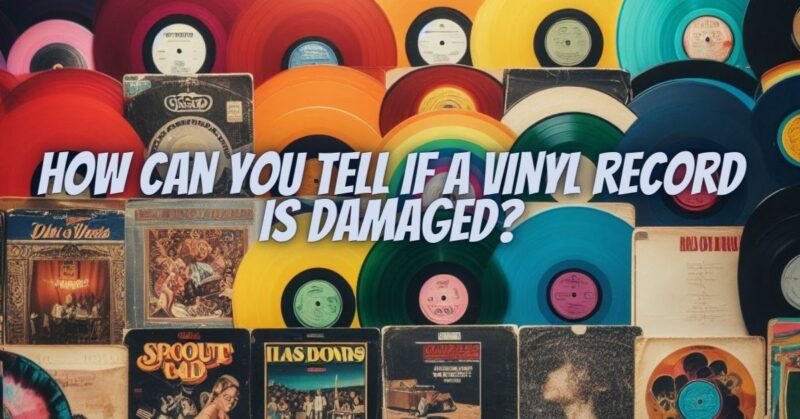Vinyl records are beloved by music enthusiasts for their analog warmth and tactile appeal. However, they are also susceptible to damage over time, which can affect their sound quality and playability. In this comprehensive article, we will explore how you can tell if a vinyl record is damaged. We’ll discuss common types of damage, visual and auditory cues, and the importance of proper care to preserve your vinyl collection.
Types of Vinyl Record Damage
Vinyl records can suffer from various types of damage, each with its own telltale signs:
- Surface Scratches: Surface scratches are light marks on the vinyl’s surface that can affect playback. They often manifest as thin lines or scuffs.
- Deep Scratches: Deep scratches are more severe than surface scratches and can cause audible skips or jumps during playback. They are often visible as grooves or gouges in the vinyl.
- Warping: Warping occurs when a vinyl record loses its flat shape and becomes curved or bowed. This can lead to tracking and playback issues.
- Groove Wear: Over time, the constant friction between the stylus and the groove can wear down the vinyl. Groove wear can result in diminished sound quality and loss of detail.
- Cracks: Cracks are fractures or splits in the vinyl that can cause significant playback problems. They are often visible as jagged lines on the surface.
- Surface Contaminants: Dust, dirt, or debris on the record’s surface can introduce surface noise and affect sound quality. These contaminants are often visible upon close inspection.
Identifying Vinyl Record Damage
- Visual Inspection:
a. Scratches: Examine the vinyl under good lighting conditions. Surface scratches and deep scratches are usually visible as lines or marks on the surface. Deep scratches may be felt by running a fingernail across the groove.
b. Warping: Place the record on a flat surface and observe if it lies perfectly flat. Warping will cause the record to bow or lift at one or more points.
c. Groove Wear: Look closely at the grooves for signs of wear or unevenness. Groove wear may appear as a smoothing or flattening of the groove walls.
d. Cracks: Check for visible cracks or fractures on the record’s surface. Cracks are typically easy to spot, even without magnification.
e. Surface Contaminants: Inspect the record for dust, dirt, or debris. These contaminants may be visible, especially when the record is held at an angle under light.
- Auditory Cues:
a. Playback Issues: When playing the record, listen for skips, jumps, or repetitive popping sounds. These can indicate the presence of scratches, deep grooves, or cracks.
b. Noise and Distortion: Pay attention to the overall sound quality. If you hear excessive surface noise, crackling, or distortion not present in other records, it may indicate damage or contaminants.
Preserving Your Vinyl Collection
To maintain the integrity of your vinyl collection and prevent further damage, consider these preservation tips:
- Handle Records Carefully: Always handle vinyl records by their edges to avoid transferring oils and contaminants to the playing surface.
- Use Proper Storage: Store records vertically in protective sleeves and a cool, dry environment away from direct sunlight and temperature extremes.
- Clean Your Records: Regularly clean your vinyl records using a dedicated brush, antistatic brush, or a record cleaning machine to remove dust and debris.
- Replace Inner Sleeves: Consider replacing paper inner sleeves with antistatic polyethylene or polypropylene sleeves to reduce static and prevent scratches.
- Maintain Your Turntable: Ensure your turntable is correctly set up, with proper tracking force and alignment, to minimize wear on your records.
Vinyl record damage can manifest in various forms, affecting both visual and auditory aspects of playback. Regular visual inspection and careful listening during playback can help you identify and address damage early, preserving the quality of your vinyl collection. By following proper handling, storage, and cleaning techniques, you can enjoy your vinyl records for years to come while minimizing the risk of damage.


